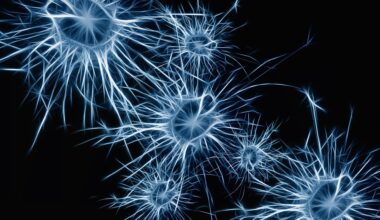Pictured: Dr. Weihong Song in his lab. Image credit: Paul Joseph/UBC.
Dr. Weihong Song has recently published two studies in the journal Molecular Psychiatry that provide insight into the genetic and biochemical mechanisms of Alzheimer’s disease.
The most recent paper, published today, built on a discovery he and colleagues made almost a decade ago, involving a family living in southern China. All three siblings, as well as adult child of one of those siblings, developed early-onset Alzheimer’s disease, and they shared a genetic mutation that had never before been reported.
The mutation was on a gene, presenilin 1, that has almost 200 other Alzheimer’s-associated mutations. But Dr. Song and his colleagues didn’t stop there, and explored how this mutation contributed to the disease.
Two decades ago, Dr. Song and other scientists discovered that the protein produced by Presnilin 1 is a key component of g-secretase, an enzyme that cuts a protein into toxic fragments, called amyloid beta, which smothers brain cells. Recent efforts to find an Alzheimer’s treatment have focused on either interfering with g-secretase or blocking another amyloid beta-producing enzyme, BACE1.
The problem with that approach is that interfering with g-secretase also interferes with another protein called Notch, which is crucial for brain cell development. Those collateral effects might be why recent drug trials have failed – not only have the drugs not been effective in slowing the disease, but they also caused unacceptable side effects.
Dr. Song and his colleagues found that the mutation in the Chinese family, unlike all of the other presenilin 1 mutations, didn’t affect Notch. Their discovery thus pinpoints a new target – the proteins and pathways affected by the Chinese family’s mutation – that might skirt the collateral damage of g-secretase inhibitors.
Dr. Song’s other study, published April 27, revealed another possible therapeutic target – not for blocking, but for promoting.
The target is a mostly-overlooked enzyme called BACE2. Dr. Song and Xiulian Sun at Shandong University in Jinan, China, discovered that BACE2 – in contrast to its cousin, BACE1 – has a neuroprotective role by staving off brain cell death. BACE1
This finding, like the more recent paper about presenilin 1 and Notch, highlights the potential for a more targeted therapy. BACE1 inhibitors also inhibit BACE2, which could explain those drugs’ inability to save brain cells from plaque.
Dr. Song, a Canada Research Chair in Alzheimer’s disease, the Jack Brown and Family Professor and Director of UBC’s Townsend Family Laboratories, says his finding provides a rationale for trying a gene therapy in animal models of Alzheimer’s disease that boosts levels of BACE2 in the brain.


